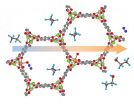(Press-News.org) The nation's obesity epidemic is striking all groups of Americans, affecting those with more education and those with less education, as well as all ethnic groups, according to a new analysis that challenges prevailing assumptions about the reasons why the nation is getting heavier.
While some differences in weight are evident between groups based on race and education levels, all Americans have been getting fatter at about the same rate for the past 25 years, even as the nation saw increases in leisure time, increased availability of fruit and vegetables, and increases in exercise.
Since 1970, the average per capita consumption of calories of Americans has risen by about 20 percent, while at the same time there has been a sharp drop in the cost of food as a proportion of disposable income, according to a report published online by the journal CA: A Cancer Journal for Clinicians.
"Not only has food been getting cheaper, but it is easier to acquire and easier to prepare," said Roland Sturm, lead author of the report and a senior economist at RAND, a nonprofit research organization. "It's not just that we may be eating more high-calorie food, but we are eating more of all types of food."
Many factors have been blamed for a growing incidence of obesity in the United States, including fast food, suburban sprawl, the size of prepared meals, poverty, affluence, a lack of exercise and a shortage of access to healthy foods.
Analyzing economic factors that contribute to obesity, Sturm and co-author Ruopeng An of the University of Illinois at Urbana-Champaign found that weight gain was surprisingly similar across sociodemographic groups and geographic areas, rather than specific to some groups. The findings suggest that the cause of obesity is driven by environmental factors that affect all groups, not just a few.
The RAND researchers say that Americans now have the cheapest food in history, when measured as a fraction of disposal income. During the 1930s, American spent about one-quarter of their disposal income on food, dropping to one-fifth during the 1950s. Today, Americans spend about one-tenth of their disposable income on food.
"Not only has the cost of food dropped, but it has become even more available," An said. "So a smaller share of Americans' disposable income now buys many more calories."
The decline of food expenditures relative to income becomes more dramatic when considering quality factors, such as greater convenience, reduced time needed for preparation, increased variety and the ubiquitous availability of food.
Sturm and An say that effective economic policies to curb obesity remain elusive.
Imposing taxes on foods with low-nutritional value could nudge behavior toward healthier diets, as might subsidies or discounts for healthier foods. But political and popular support for such approaches has been low.
For example, Denmark imposed a tax on foods high in saturated fats in 2011, only to repeal the move a year later. In the United States, there have been numerous legislative proposals to tax soft drinks or junk food, but no meaningful plans have passed to date.
"The high cost of healthy food may not be the problem as far as obesity is concerned, rather it is the excess availability and affordability of all types of food," Sturm said. "We need to consider strategies that replace calorie-dense foods with fruits and vegetables, rather than just add fruits and vegetables to the diet."
INFORMATION:
Support for the research was provided by the National Institutes of Health and RAND.
RAND Health is the nation's largest independent health policy research program, with a broad research portfolio that focuses on health care costs, quality and public health preparedness, among other topics.
US obesity epidemic making all segments of the nation fatter, study finds
2014-05-22
ELSE PRESS RELEASES FROM THIS DATE:
Being Sardinian puts a smile on the face of the elderly
2014-05-22
Residents of the Italian island of Sardinia are known for their longevity. Now, a new study also shows that elderly Sardinians are less depressed and generally are in a better mental frame of mind than peers living elsewhere. The study, led by Maria Chiara Fastame and Maria Pietronilla Penna of the University of Cagliari in Italy and Paul Hitchcott from the Southampton Solent University in UK, is published in Springer's journal Applied Research in Quality of Life.
Various tests to measure the mental state and capacity of elderly people were performed on 191 cognitively ...
Gene therapy extends survival in an animal model of spinal muscular atrophy
2014-05-22
New Rochelle, NY, May 22, 2014—To make up for insufficient amounts of SMN protein, the cause of the inherited neuromuscular disease spinal muscular atrophy (SMA), researchers have successfully delivered a replacement SMN1 gene directly to the spinal cords of animal models of SMA. A new study demonstrating that enough copies of the SMN1 gene can be delivered to the spinal cord motor neurons to extend the survival of the treated animals is published in Human Gene Therapy, a peer-reviewed journal from Mary Ann Liebert, Inc., publishers. The article is available free on the ...
JILA study finds crowding has big effects on biomolecules
2014-05-22
Crowding has notoriously negative effects at large size scales, blamed for everything from human disease and depression to community resource shortages. But relatively little is known about the influence of crowding at the cellular level. A new JILA study shows that a crowded environment has dramatic effects on individual biomolecules.
In the first data on the underlying dynamics (or kinetics)of crowded single biomolecules , reported in Proceedings of the National Academy of Sciences,* JILA researchers found that crowding leads to a 35-fold increase in the folding rate ...
From separation to transformation: Metal-organic framework shows new talent
2014-05-22
This gift from science just keeps on giving. Measurements taken at the National Institute of Standards and Technology (NIST) show why a material already known to be good at separating components of natural gas also can do something trickier: help convert one chemical to another, a process called catalysis. The discovery is a rare example of a laboratory-made material easily performing a task that biology usually requires a complex series of steps to accomplish.
The material is a metal-organic framework (MOF), one of a class of substances whose porosity, high surface area ...
Don't blink! NIST studies why quantum dots suffer from 'fluorescence intermittency'
2014-05-22
Researchers at the National Institute of Standards and Technology (NIST), working in collaboration with the Naval Research Laboratory, have found that a particular species of quantum dots that weren't commonly thought to blink, do.
So what? Well, although the blinks are short—on the order of nanoseconds to milliseconds—even brief fluctuations can result in efficiency losses that could cause trouble for using quantum dots to generate photons that move information around inside a quantum computer or between nodes of a future high-security internet based on quantum telecommunications.
Beyond ...
Putting a number on opinion dynamics in a population
2014-05-22
Philadelphia, PA—Opinion formation in a large population is influenced by both endogenous factors, such as interaction with one's peers—in-person and via social media—as well as exogenous factors, such as the media, of which mainstream media is one of the most influential factors. For example, according to a study conducted by the National Bureau of Economic Research in 2006, after the introduction and expansion of Fox News in the United States between 1996 and 2000, an estimated 3-28% of the audience was persuaded to vote Republican.
In a recent paper published in ...
NIST chip produces and detects specialized gas for biomedical analysis
2014-05-22
A chip-scale device that both produces and detects a specialized gas used in biomedical analysis and medical imaging has been built and demonstrated at the National Institute of Standards and Technology (NIST). Described in Nature Communications,* the new microfluidic chip produces polarized (or magnetized) xenon gas and then detects even the faintest magnetic signals from the gas.
Polarized xenon—with the atoms' nuclear "spins" aligned like bar magnets in the same direction—can be dissolved in liquids and used to detect the presence of certain molecules. A chemical interaction ...
NCNR neutrons highlight possible battery candidate
2014-05-22
Analysis of a manganese-based crystal by scientists at the National Institute of Standards and Technology (NIST) and the Massachusetts Institute of Technology (MIT) has produced the first clear picture of its molecular structure. The findings could help explain the magnetic and electronic behavior of the whole family of crystals, many of which have potential for use in batteries.
The family of crystals it belongs to has no formal name, but it has three branches, each of which is built around manganese, cobalt or iron—transition metals that can have different magnetic ...
Bending helps to control nanomaterials
2014-05-22
A new remedy has been found to tackle the difficulty of controlling layered nanomaterials. Control can be improved by simply bending the material.
The mechanism was observed by Academy Research Fellow Pekka Koskinen from the Nanoscience Center of the University of Jyväskylä together with his colleagues from the University of Massachusetts Amherst in the US. Bending decreases interaction between layers, making the material merely a stack of independent atomic layers.
The group investigated the van der Waals nanomaterials which consist of stacked and loosely bound two-dimensional ...
Safety in numbers: Moderate drinking in a group reduces attraction to risk
2014-05-22
New research led by the University of Kent shows that individuals who have consumed moderate amounts of alcohol in social situations are likely to view risky situations with greater caution when considering them as part of a group.
The research, by psychologists from the University of Kent and the University of East Anglia, produced the first evidence found outside of laboratory conditions that being in a group can reduce some effects of alcohol consumption. The findings could lead to the design of new interventions designed to promote safer recreational drinking.
Researchers ...




